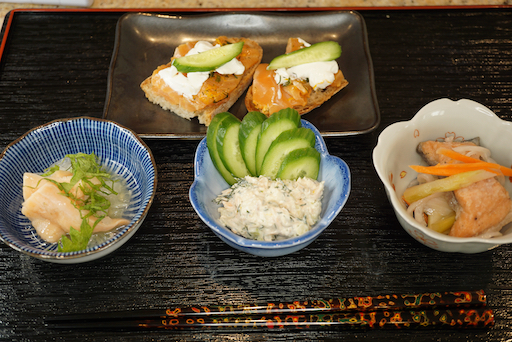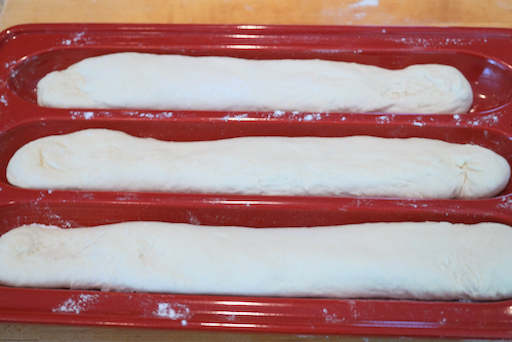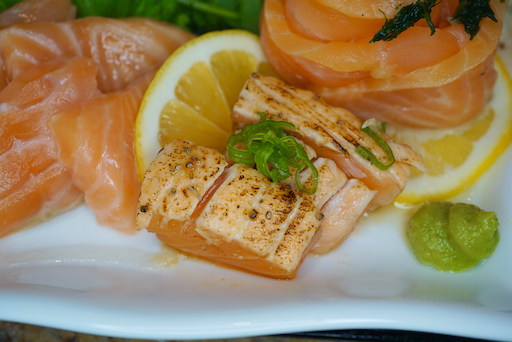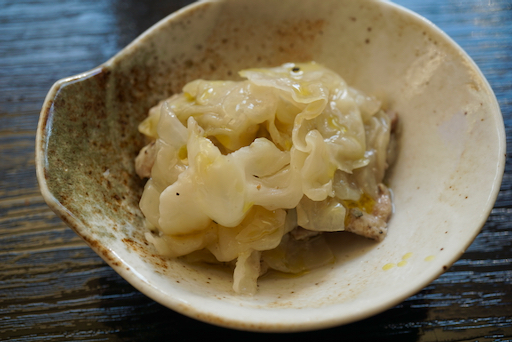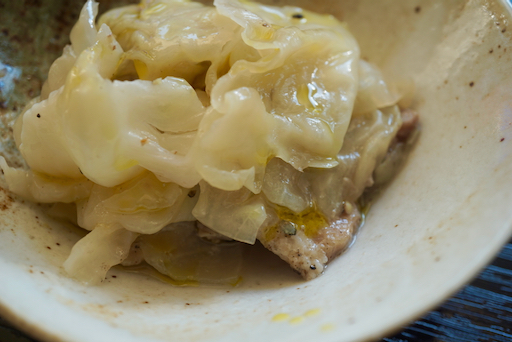I have been making
baguettes for some time. Getting a good crust on the bread, however, is always tricky since home ovens do not have steam injectors. I used to create the necessary steam by putting a baking sheet below the baking stone and then throwing in a couple of ice cubes after placing the baguettes on the baking stone. I believe that this may have led to the eventual demise of our old oven. In the interests of preserving our replacement oven I stopped the “ice cube” method and, instead, I sprayed water on the baguette dough just before putting it into the oven. This creates some crust but not a good one. More recently I started baking
no-knead bread in a cast iron pot which created a nice crust. Apparently steam from the dough gets trapped and produces the crust. Since it is not possible to place a long straight baguette in a short round pot, we got this french made (Emile Henry) ceramic baguette baker. It requires some modifications to my baking methods. The below is the second try which I consider 80% successful. Since I made this using biga/poolish starter that my wife made, the texture is great, the taste is wonderful and cooked in the new baker, the crust is much better. But, these are not full size baguettes; they should be called mini-baguettes.
This shows the baguette baker with lid. (Lovely, luscious red color. All the other colors were sold out. Baking has become very popular during covid.) There are three small holes on the top.
The below picture shows the the baker bottom with the lid removed This makes three rather small baguettes.
Ingredients
For biga/poolish
1 cup bread flour
1 cup buttermilk
1/8 tsp active yeast
Mix in a bowl, cover with plastic wrap, then with towels and keep at room temperature for 12 hours.
2 cups of bread flour
1/2 tbs Kosher salt
Additional water/flour if needed
Directions
In a stand mixer, fitted with a dough hook, add the biga, the flour, salt and mix in low speed. Once the dough is formed, turn up the speed. The dough may be attached to the bowl at the bottom but cleanly pulls away from the sides. If too wet, add flour, if too dry, add water. Let it knead for 7-8 minutes.
Scrape out the dough onto a well floured work surface and hand knead until smooth. Form into a ball and seal by pinching the bottom seam. Add a small amount of neutral oil in a bowl, place the dough, turn to coat all surfaces. Cover it with a plastic wrap and then towels and let it rise for a few hours in warm draft-free place. When it doubles in size, deflate, fold and put it back in the bowl cover and let it rise for the second time for a few more hours.
Place the dough on a well-floured work surface. Fold several times and divide into three equal sized balls (I weighed the pieces to make sure all three were of equal weight). Let the dough rest for 10 minutes. Fold the dough ball in half twice to make a short cylinder. Make an elongated dough which will fit the bottom of the baker (see below). Put on the cover and let it rise 20-30 minutes. Slash the dough with a lame or sharp knife, spray enough water on the dough to coat it, put the lid on and place it the oven preheated to 450F for 25 minutes,
Take off the lid and bake another 5 minutes until golden brown (below)
Take the baguettes out of the baker and cool on a wire rack. This was, as I said before, only an 80% success. The first attempt was a sort of failure since I used a total of 3 and 3/4 cup flour which was too much dough. Although the initial dough fit nicely in the baker the baguettes expanded and fused together into one mass. It still tasted good. The second try, I used a total of 3 cups of flour (one cup in the starter and I added 2 cups more). This amount of dough fit very nicely but the center baguette was stuck to the baker bottom and half of the bottom crust came off. To remedy this problem, we may need to grease and flour the base. We will post if this works next time. I forgot to mention that with the biga starter this bread had a wonderful flavor that is unmatched by any commercially made bread we have ever eaten.

